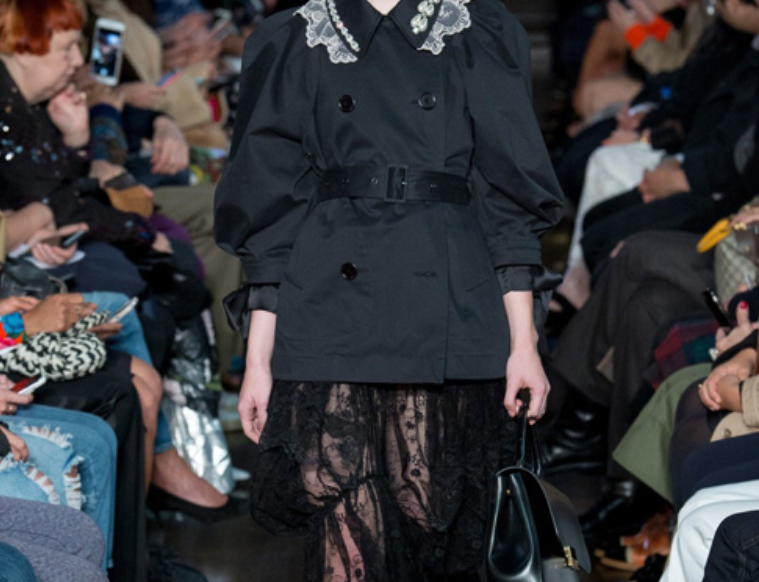
Givenchy had said so. For years, he worked in the workshop wearing the white coat Balenciaga gave him as a token of respect for haute couture and his mentor; In 1956, Balenciaga, tired of being copied by the mass market because of its early exposure, abolished the traditional press preview system, and Givenchy immediately followed suit, refusing advance visits to the fashion press. As Givenchy himself put it:
"Balenciaga's self-discipline, frankness and simplicity have all influenced me. His designs continue to inspire and inspire me. Or rather, I've always fallen for him." Of course, Balenciaga's influence on Givenchy was also huge. He not only generously recommended the artisans in his workshop, but also shared exclusive fabric suppliers with Givenchy.
With regard to this relationship, some critics have claimed that Balenciaga overshadowed Givenchy, but the truth is that, out of the greatest respect for his teacher, Givenchy imitated Balenciaga everywhere, while deliberately not allowing his work to surpass the latter's original.
What led me to this conclusion was a couple of Givenchy looks from the sixties. An earlier design for a Burgundy Givenchy dress studied at BlytheHouse in London was a simple backless cocktail dress (simple because it rarely had a corset underneath) paired with a matching cape.
This group of shapes, if worn on the human stage, the cloak and the skirt itself will be cleverly integrated, and the skirt is short at the front and long at the back, it is difficult not to remind people of Balenciaga in 1965 once launched a similar dress dress. The latter cleverly integrates two morphological structures into one dress, creating an interesting picture that looks new from every Angle.
In addition, the fabric designed by Givenchy is a silk fabric called "Gazar" - a special fabric with a hard texture but also the gloss and luxury of silk itself, which was produced exclusively by Balenciaga in collaboration with the Swiss fabric manufacturer Abraham in the early sixties.
From this point of view, Givenchy's original intention must have been inspired by Balenciaga's work. He chose the teacher's exclusive fabric and to some extent referenced the architectural outline of the work; However, the choice of design as a combination of skirt and cape seems to have reservations about the teacher's original unique dress structure.
Another example is the wedding dress design by Givenchy. A Givenchy wedding dress from 1967 in the collection of the Chicago History Museum also resembles Balenciaga's famous clean-cut wedding dresses from the latter part of his career: both are made of gazar fabric and have a dramatic architectural feel. Of course, not earlier in the 1950s, Balenciaga and Givenchy launched at about the same time to remove the waist "Sack dress".
But there are some stylistic differences: Balenciaga studies designing clothes as if it were a religion; While Givenchy was influenced by his teacher, his goal was always to make his clients presentable, rather than Balenciaga's sometimes abstract and artistic approach.
We can therefore say that Givenchy's greatest style is one of restrained elegance. This kind of beauty is applicable to most women, and it is a long-term summary of social women's aesthetic style. As a result, Givenchy has many celebrity clients - who are impressed by Givenchy's performance.
Jacqueline Kennedy has always loved French fashion, and Givenchy is her favorite. As the First Lady of the United States, Jacqueline could not afford to buy Givenchy's works on a large scale, so she would ask a private designer to re-create her own designs based on Givenchy's.
Of course, Jacqueline took the opportunity to wear a Givenchy dress when she accompanied her husband to France in 1961. The dress, which accentuated Jacqueline's modesty with its accent on the waist and shoulders, sparked a flurry of discussion among the press and the public, even overshadowing the visit itself.
Of course, Givenchy's most famous guest was actress Audrey Hepburn. The decades-long relationship between her and Givenchy is more than journalists and writers can write.
Givenchy not only provided Hepburn with the perfect wardrobe, but also created most of her screen appearance. In particular, in the movie "Sweet Face", the fashion model played by Hepburn wears more than ten sets of Givenchy designed costumes to take photos and walk on the runway. The saturated colors and the right proportion of the costumes make people dizzying and wonderful.
Another thing that fashion historians rarely mention is how Givenchy's fashions evolve with The Times. In the 1970s, the silhouette of his work became noticeably slimmer, incorporating more patterns and rich colors; In the 1980s and 1990s, with the gradual opening of the social atmosphere, Givenchy fashion also began to deliberately emphasize the specific parts of the naked wearer.
For example, he designed a black dress in 1980, with arms, shoulders, chest and one side of the dress made of see-through black gauze material, leaving the wearer's skin exposed.
In this way, the later Givenchy is full of a high erotic sense. This erotic sense and the designer has always been controlled style just echoes, will not weaken the high-end texture of fashion, but more to add new interest and connotation.
Givenchy retired in 1995. At the last show, peers such as Valentino and KarlLagerfeld showed up to support the show; Givenchy himself wore the same white coat at the end of the show.
Later, John Galliano, Alexander McQueen, Julien Macdonald and Riccardo Tisci successively accepted the work of the main designer of the fashion house, adding more diverse elements to the brand at the same time.
It also makes its appearance and direction gradually distance from Givenchy's own style.
As for Givenchy himself, he chose to live in seclusion in the French countryside. But you'll see him again in museum retrospectives, hefty books on haute couture, and occasional media interviews.

